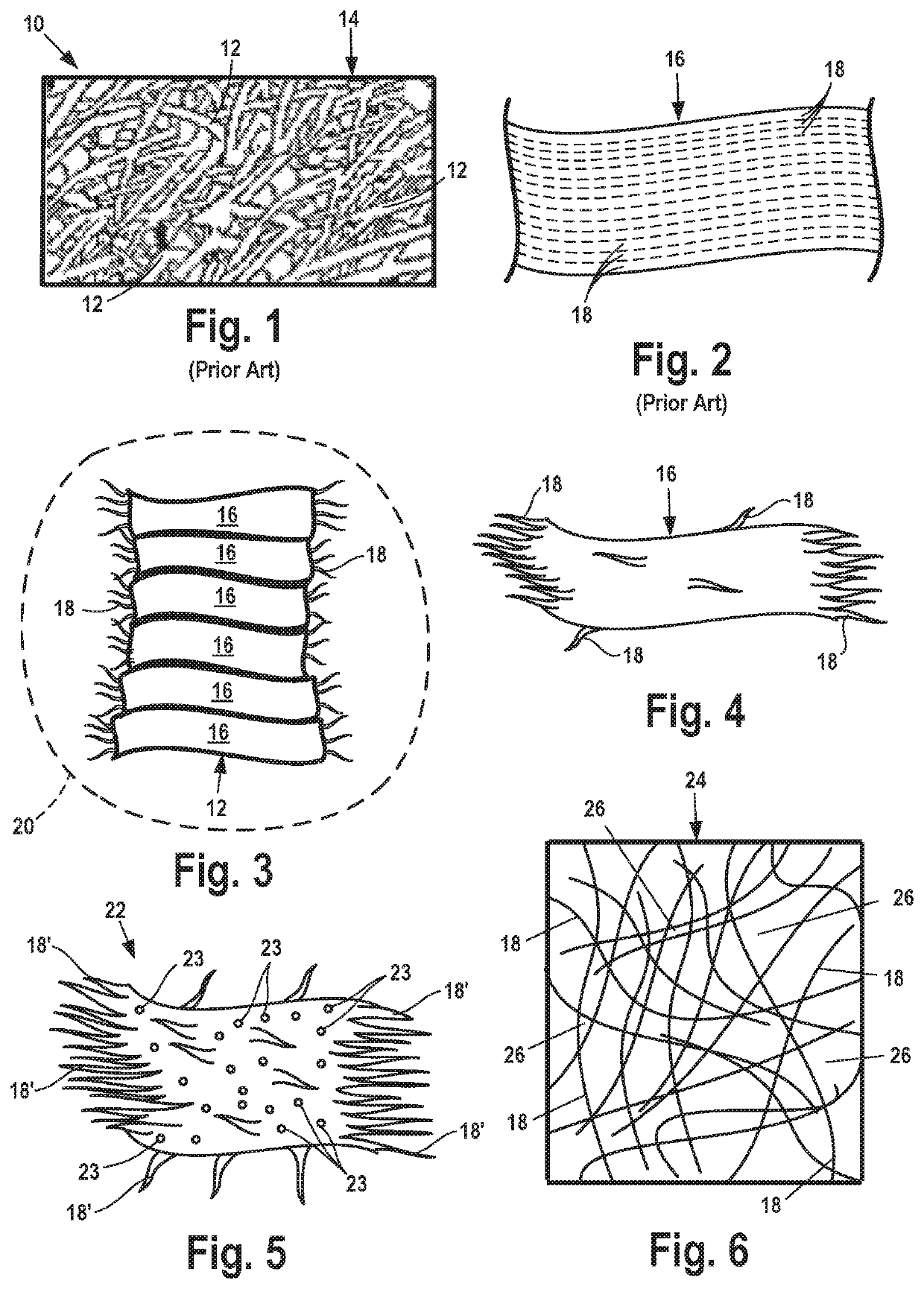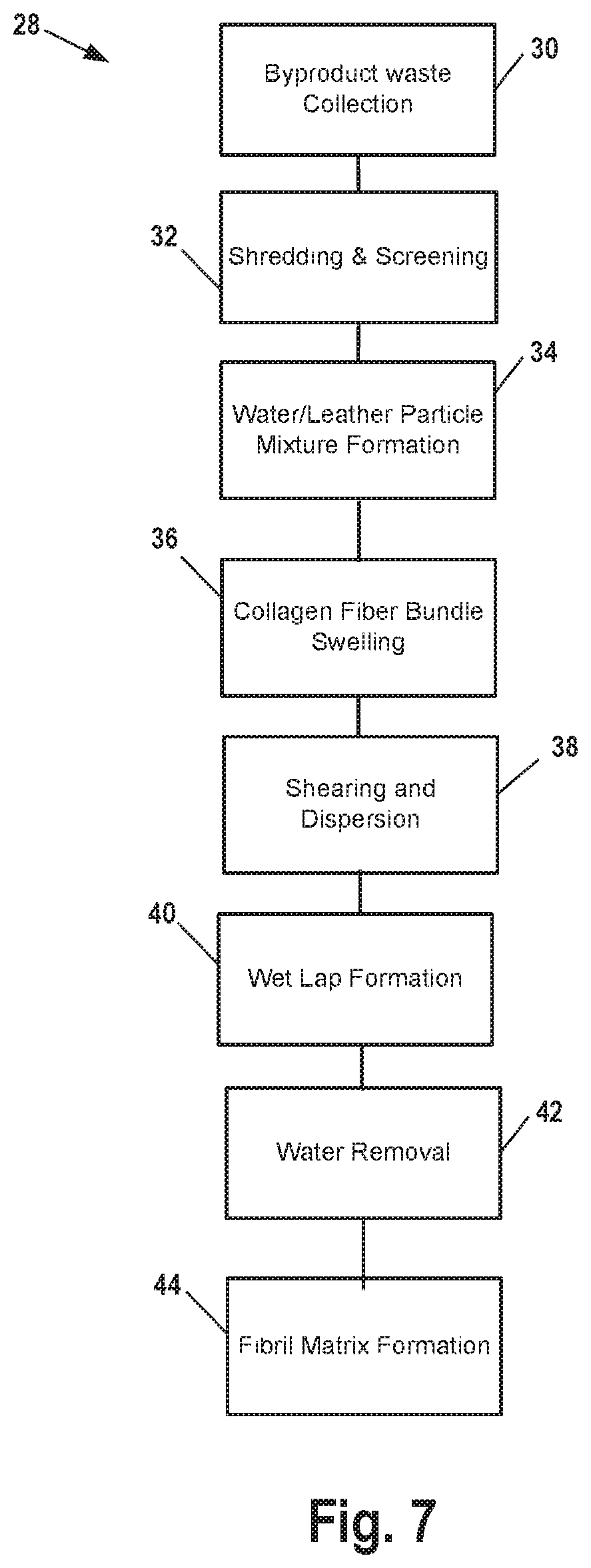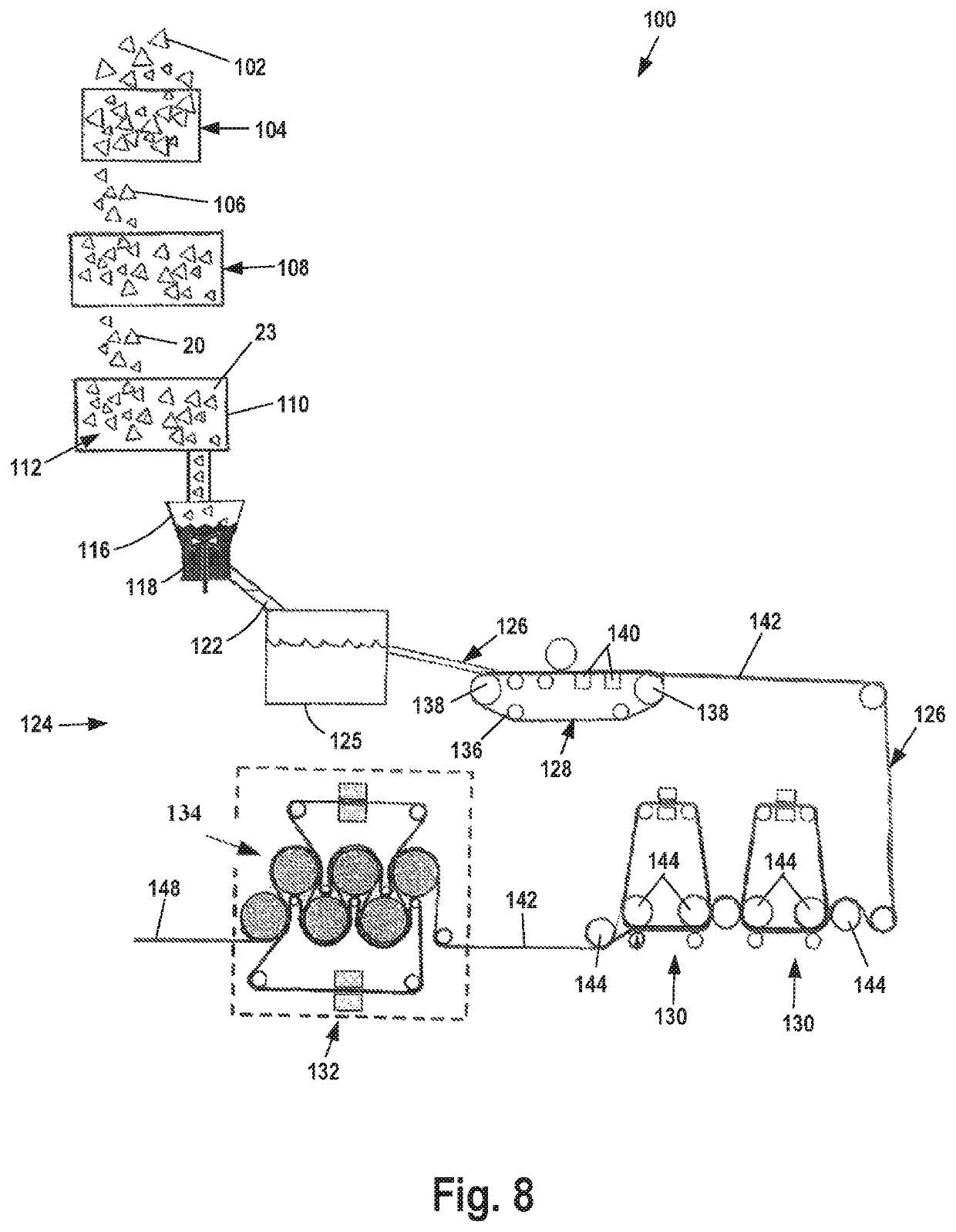High strength leather material
a high-tensile leather and material technology, applied in the field of formed leather products, can solve the problems of affecting the quality of natural leather, and reducing the production efficiency of bonded leather type synthetic leather,
- Summary
- Abstract
- Description
- Claims
- Application Information
AI Technical Summary
Benefits of technology
Problems solved by technology
Method used
Image
Examples
Embodiment Construction
[0024]Disclosed is a formed leather substrate material created from commonly-available waste leather byproducts and its method of manufacture. The formed leather product reliably reproduces desirable physical characteristics of natural leather including high tensile strength and desired elastic properties for end applications and treatability by conventional leather conditioning substances.
[0025]The disclosed leather substrate materials may have a tear resistance measured by the International Organization for Standardization, for physical and mechanical tests conducted on leather for the determination of tear load (ISO 3377-1) exceeding 25 Newtons (N). Disclosed leather substrate materials likewise have a tear resistance measured by ASTM International for the standard test method for tearing strength, tongue tear of leather (ASTM D 4704 Standard) exceeding 20 Newtons (N).
[0026]The formation of such high strength and tear resistant leather materials is very desirable for use in end a...
PUM
| Property | Measurement | Unit |
|---|---|---|
| thickness | aaaaa | aaaaa |
| tensile strength | aaaaa | aaaaa |
| viscosity | aaaaa | aaaaa |
Abstract
Description
Claims
Application Information
 Login to View More
Login to View More - R&D
- Intellectual Property
- Life Sciences
- Materials
- Tech Scout
- Unparalleled Data Quality
- Higher Quality Content
- 60% Fewer Hallucinations
Browse by: Latest US Patents, China's latest patents, Technical Efficacy Thesaurus, Application Domain, Technology Topic, Popular Technical Reports.
© 2025 PatSnap. All rights reserved.Legal|Privacy policy|Modern Slavery Act Transparency Statement|Sitemap|About US| Contact US: help@patsnap.com



